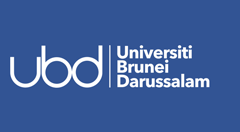ASEAN Journal on Science and Technology for Development
Abstract
Edible insects are emerging as a sustainable food source due to their high nutritional value. This study employed the three-phase partitioning (TPP) method to extract oils from sago worm (Rhynchophorus ferrugineus), superworm (Zophobas morio), and cricket (Acheta domesticus). The study evaluated and compared the physicochemical properties of these insect oils, including iodine value (IV), peroxide value (PV), p-anisidine value (p-AV), acid value (AV), refractive index (RI), thermal behavior, and fatty acid compositions. Results revealed that the sago worm exhibited the highest oil yield (47.8 ± 2.2%) compared to the superworm (23.8 ± 1.4%) and cricket (6.4 ± 0.6%). Cricket oil (CO) displayed the highest IV (85.62 ± 0.35 g/100g), PV (50.50 ± 1.10 mEq/kg), and p-AV (4.66 ± 0.45), while AV and RI were the highest in sago worm oil (SWO) (8.23 ± 0.09 mg KOH/g) and superworm oil (SO) (1.4655 ± 0.00), respectively. The melting and crystallization profiles of these insect oils varied. Palmitic acid (C16:0) was the predominant fatty acid in all insect oils. CO exhibited the highest content of unsaturated fatty acids (51%), followed by SO (42%) and SWO (39%). This study highlights the potential applications of insect oils in various industries.
Publication Date
2024
Received Date
4-September-2023
Revised Date
26-September-2023
Accepted Date
4-October-2023
Recommended Citation
Phuah, Eng-Tong; Lee, Yee-Ying; Tang, Teck-Kim; Li, Guanghui; Hong, Shyang-Pei; and Lim, Syazana Abdullah
(2024)
"Physicochemical Characterization of Edible Insect Oils: Insights into Fatty Acid Composition, Thermal Behavior and Quality Parameters,"
ASEAN Journal on Science and Technology for Development: Vol. 40:
No.
2, Article 4.
DOI: https://doi.org/10.61931/2224-9028.1527
Available at:
https://ajstd.ubd.edu.bn/journal/vol40/iss2/4

